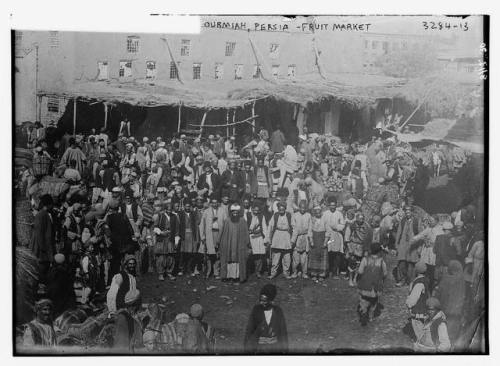#iranian history



Three depictions of lovers/couples from the 17th century CE in Safavid Persia. All three reflect the growing acceptance of sensuality in art within the region, especially in regards to physical and emotional bonds. This trend seems to have begun in Isfahan.
The first (top left) was painted in A.H. 1039/1630 CE by Riza-yi ` Abbasi who was revolutionary in his usage of atypical palettes and calligraphic linework. It is currently housed in the MET.
The second (top right), signed by Haidar, is more ambiguously dated to either the 11th or 12th century A.H./17th century CE. It, like the first, is housed at the MET.
The last was painted in A.H. 1098/1689 CE in the style of Mu'in Musawwir. It is currently housed at the Walters Art Museum.
Fruit market in Urmia, Persia, 1911. Before the Armenian genocide, Urmia was an important center of Eastern Christianity, with around half its population being Christian (Armenians and Assyrians). Today, that number is around one percent.
Post link

